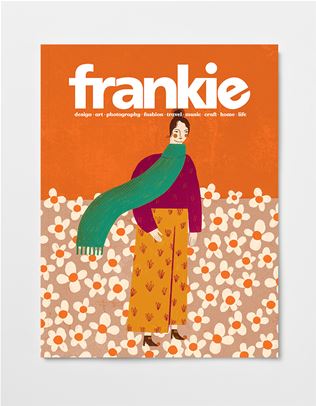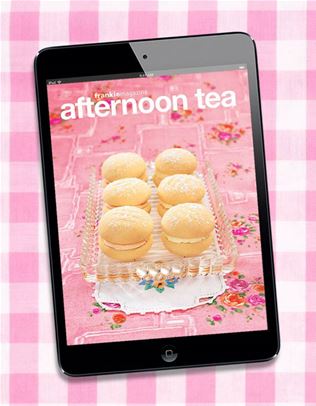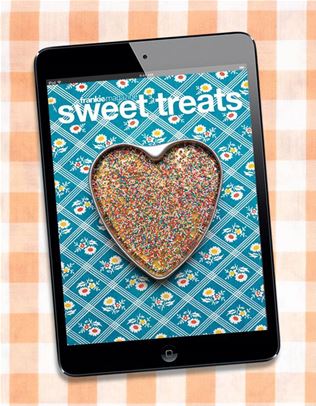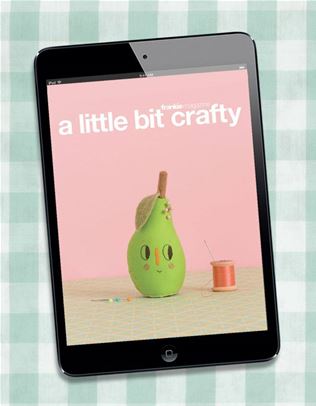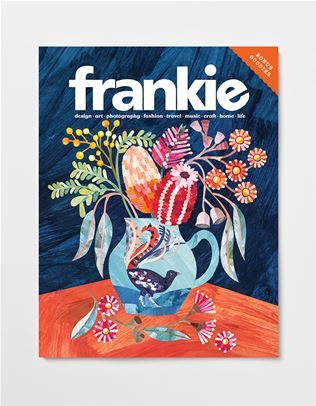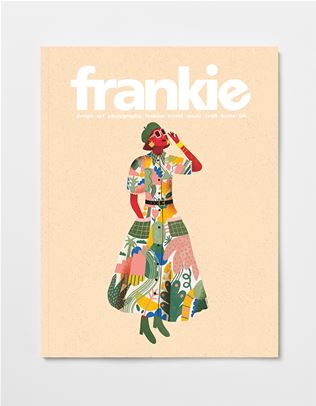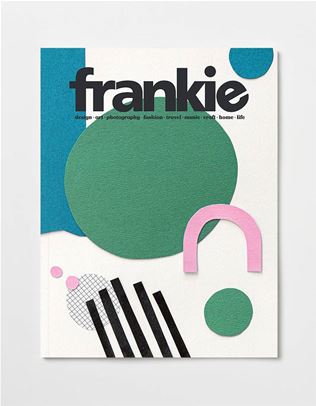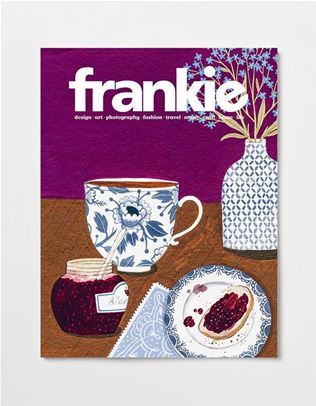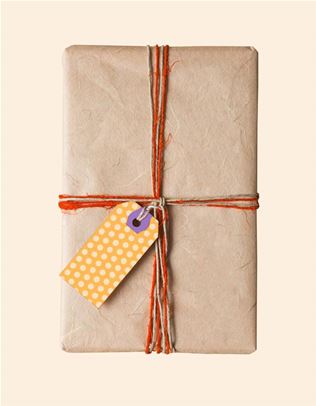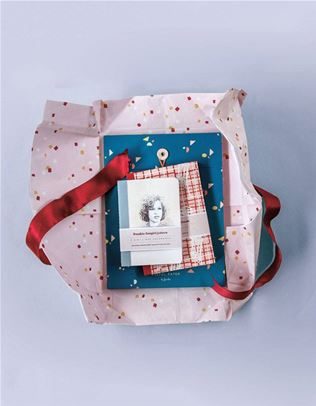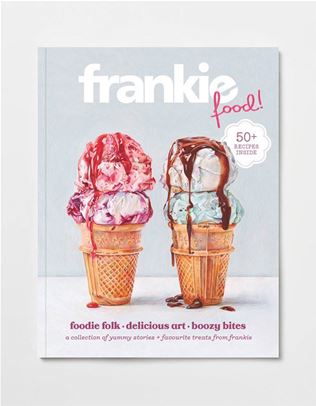look what we made – alice nightingale
Bilbies, ironbark and some pretty horrible florals are the starting point for Alice Nightingale’s handmade fashions.
You might have heard of a little coffee table book by the name of Look What We Made. It's a compilation of inspiring chats we had with local makers of all sorts, including the chinwag with designer Alice Nightingale you're about to read. If it tickles your fancy, pick one up over at the frankie shop.
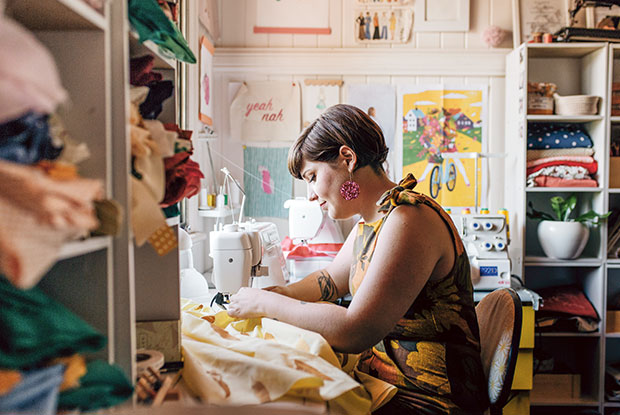
Tell us a bit about what you do. I run a handmade fashion label called Alice Nightingale and I sell my clothes online and
at markets. I’m a bit of a hermit, so most
days I’m working alone in my home studio in Brisbane: designing, printing, sewing, knitting and embroidering clothes in very small runs.
I make everything entirely by hand so I usually only produce two or three pieces of everything I sell. It means I have a lot of flexibility in terms of what I can do. I never have to go out and buy thousands of metres of fabric and make 500 versions of a dress!
How did you get started? When I was
12 my grandmother gifted three sewing machines to the three girls in the family and
I was the only one who took to it. I spent my adolescence going to high school parties in my own horribly made dresses! By the time I was in Year 11, I was thinking more seriously about where I could go with making clothes and when my school cancelled the fashion course I was meant to be taking, I left and started
a fashion design diploma at an independent TAFE. I threw myself right into it and ended up with the diploma before most of my friends had finished high school. I’ve been designing and sewing ever since. 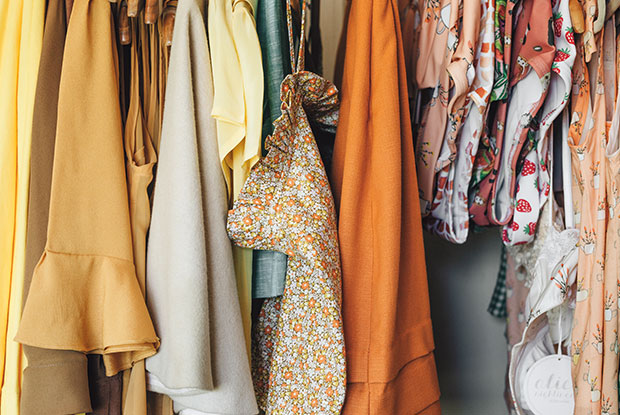
What are you usually working on? I’ve made everything from swimwear and lingerie to a full suit, but most of my range is ‘daywear’: dresses, tops, pants, jumpsuits, the comfy things you can wear every day. When I started out seven years ago, customers would sometimes say, “I bought a dress from you last year, wore it to my sister’s wedding, and I love it so much that I haven’t worn it since.” On one hand that’s lovely, but it secretly annoys me!
I want the clothes I make to be worn. And if you’re over it, I want the clothes to live beyond the op shop, in another person’s wardrobe.
To me that’s all part of being an ethical producer – making things that are high quality, that last, and that won’t end up in land fill.
You talk a bit about ethical clothing. What does that mean for you? I’m operating on a very small level in terms of what I produce, so for me being ethical isn’t about buying expensive rolls of recycled fabrics or anything like that. Instead I’m thinking about how I can slot into the fashion world in a way that doesn’t make me feel horrible about producing stuff. I work with a lot of secondhand fabrics that I’ve either found at op shops or inherited from my grandma, who had some horrible florals! Most of the fabric I find is really boring, which is great because it’s pushed me to start printing on the fabrics in order to make them mine. A lot of bigger labels design their own prints, send them overseas, and then get 90 metres of material back. I’m trying to work more locally, so all of the printing happens at home. 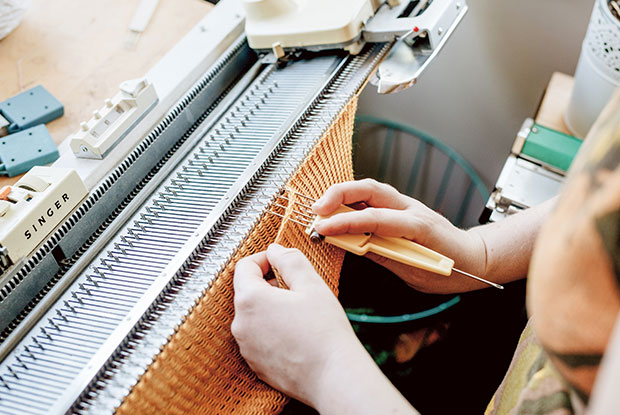
Tell us about your workspace. It’s a sprawl. I’m divided across three rooms in the house I share with my partner. I have a sewing room where I do a lot of the physical work,
a fabric room, and then I have a room for my knitting, my stock, and for packaging. The set-up is very intimate! I used to have a few very large industrial sewing machines that made everything look more ‘professional’,
but I found I just wasn’t using them, and I think that’s an important thing for crafty people to know. You don’t have to invest in fancy equipment unless you really need it, and you probably don’t need it until you literally can’t do without it.
How have you acquired your tools? Slowly over time! I was sewing on the machine that my grandma gave me for many years. Now I have a semi-industrial sewing machine, a little domestic overlocker, a very temperamental embroidering machine, the tools I need to print onto fabric, and some old-school knitting machines. The knitting machines are more unusual. They’re basically planks with a long row of needles and as you swipe the carriage or the handle down the plank, the needles come down one by one. Each needle creates a stitch in your jumper, so instead of knitting a row by hand, you knit
a whole row in the single swipe of a carriage.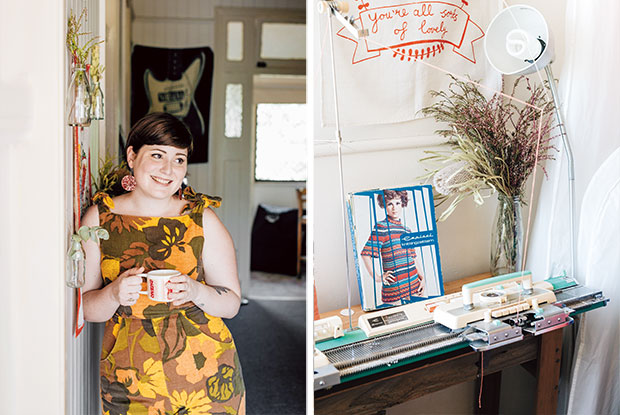
Describe a typical day in your space. My partner gets up super early to go to work, so I always get up with him and head into my sewing room in my pyjamas. At about 11 or so I come into the world, but before that I’m in a little bubble of making – it’s super satisfying! In terms of what I’m actually working on, it varies day by day. My process is a bit all over the place. I should be thinking about an idea, putting it on paper, planning, refining, and then making it, but I generally just skip those middle steps and get straight to the making. Last summer we went camping and
I desperately wanted to see a bilby. I didn’t see one (it was devastating), but they were
on my mind, so I just started drawing them and then embroidering them, and now they’re all over the place. It’s a very messy process and it’s not at all what you’re meant to do conventionally. But it works.
What inspires your prints and designs? It’s very much about the things I see around me. I went for a walk down to the river the other day; there were lovely ironbark trees, so maybe I’ll print an ironbark leaf on some fabric! The more I travel around Australia the more I fall in love with it. Earlier this year I took a 17-hour train ride to go camping, and the red earth and plant life and wallabies stuck with me. I mean, I have a wombat tattoo. I love it. Our country’s amazing and so right now I’m all for embracing Australian nature. 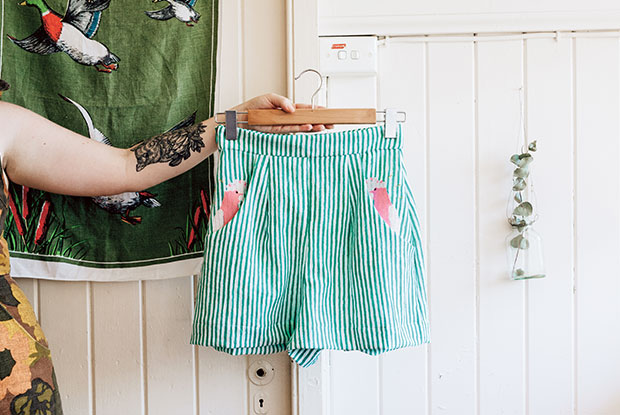
Keen for more artistic inspo? There's pages and pages of it in Look What We Made, which you pick up over at the frankie shop.






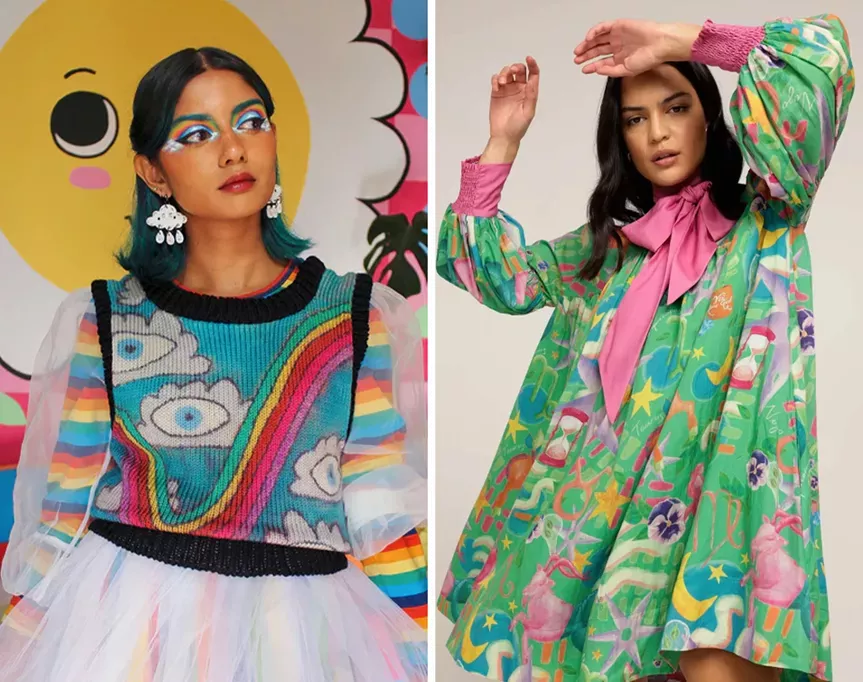


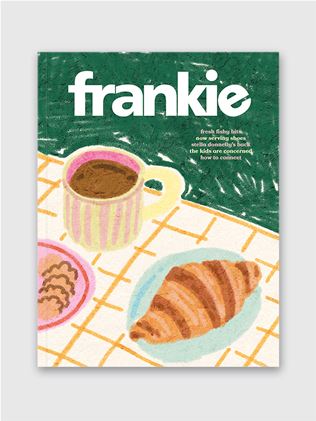
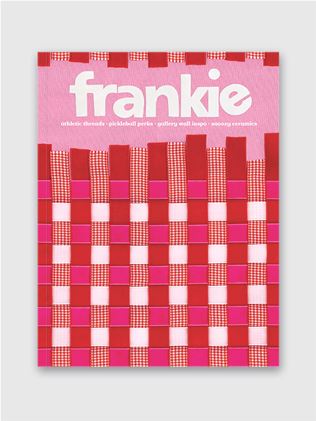
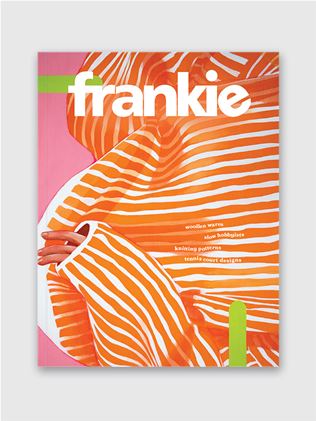
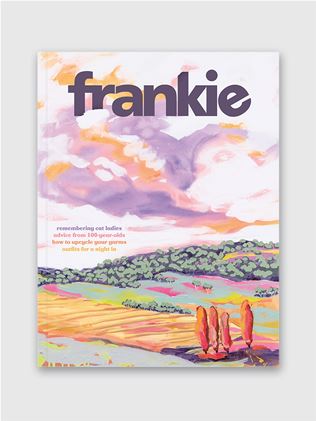
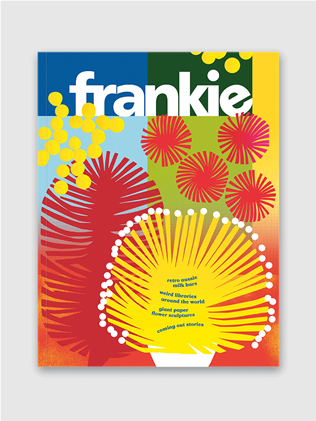
.jpg&q=80&w=316&c=1&s=1)
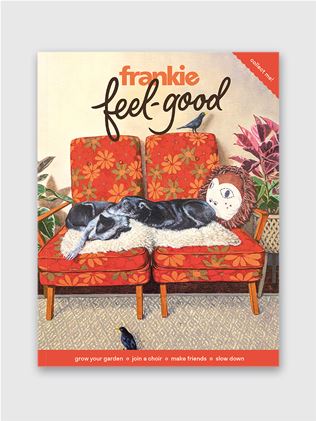
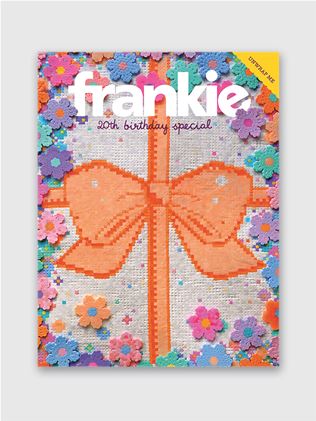
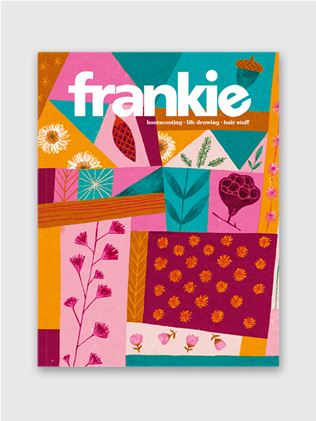

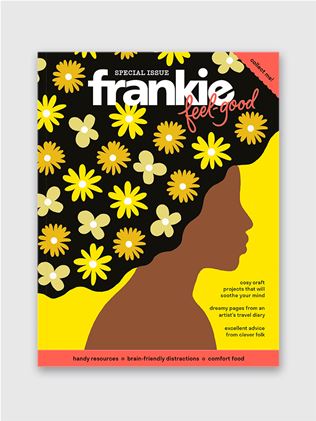
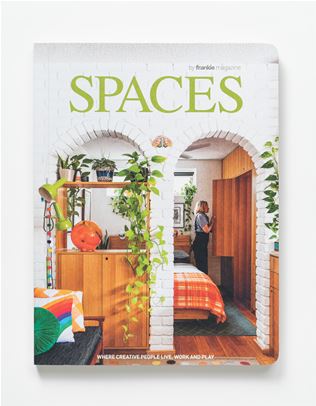
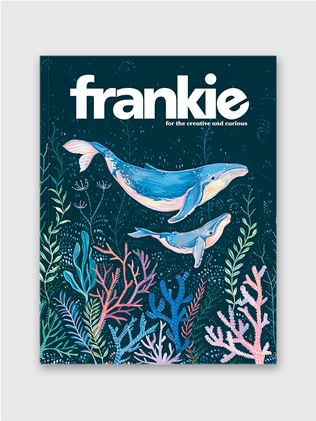
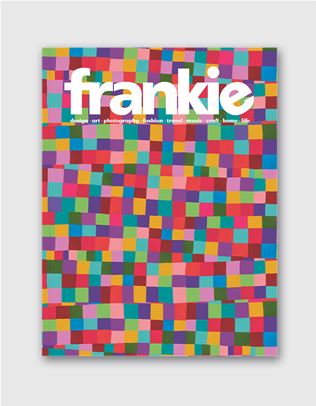
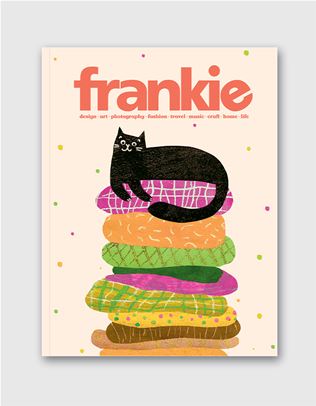
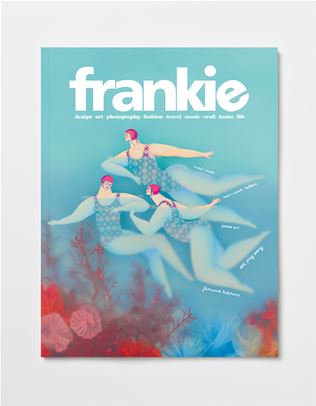
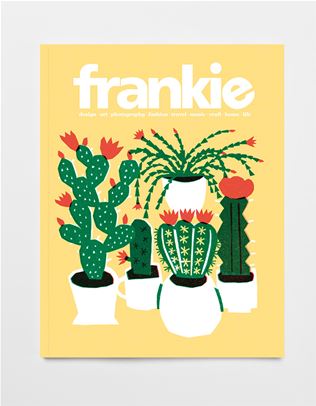
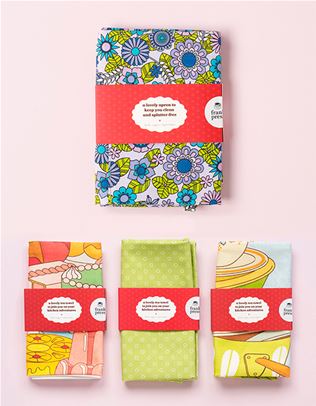
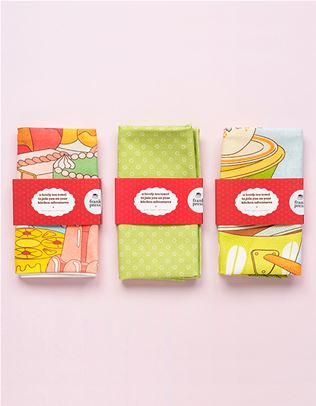
.jpg&q=80&w=316&c=1&s=1)
